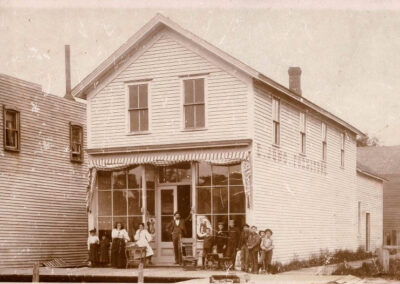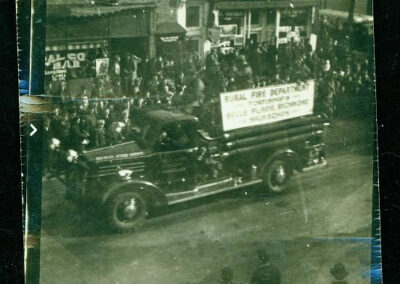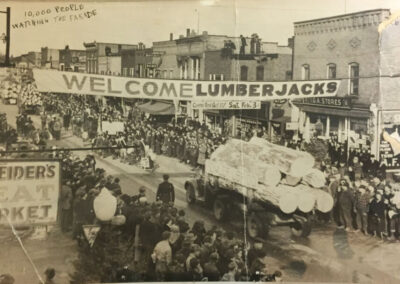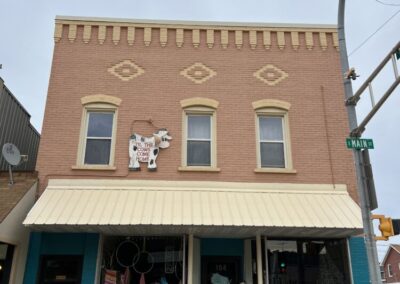Location
Photo Gallery
A Brief History
Jung’s Furniture
154 S. Main St.
Shawano, Wiscoinsin
The northeast corner of Main and Division Streets in Shawano was the home of Jung’s furniture, a wooden structure, before 1894. Since then, the I.G.A. Grocery used the building for many years and today, its the home of Till the Cows Come Home.
Some of the earliest independent specialty market retailers in downtown Shawano included furniture businesses. As early as 1894 Shawano had a dedicated furniture store, located in the building at 154 S. Main St. Like hardware, furniture was also sold by the district’s general stores. Ernst Jung’s store at this location was one of only two in the city in 1898. Jung’s store continued to operate under this name until the 1930s. In 1927 the building housed furniture sales and repair on the first floor and a cigar factory on the second; this unnamed establishment is the only known example of this common second-floor industry to operate in Shawano. It was no longer at this location by 1938.
From the 1999 National Register of Historic Places Registration application:
Like its neighbor, the Raddant Millinery shop described above, this building’s non-symmetrical facade indicates its early provenance. Built before 1894, this wood frame structure was functioning by that year as a furniture store, and was veneered by 1901. This brick veneer has a simple corbeled cornice across its primary and south-facing facades, and a series of three symmetrically-placed inset brick designs in the shape of diamonds above the second floor windows. The second floor windows have simple segmented-arch lintels and plain stone sills, and are glazed with one-over-one double-hung panes, which date from the historic period. The building’s storefront transom has been obscured, and a shallow, flat streamlined-style aluminum awning extends across the primary facade. This building is one of few of its era in the district with original cast-iron storefront columns, although its storefront may have been redesigned to allow for a slightly deeper inset entry during the later part of the historic period.




